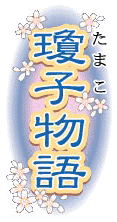|
Miss Nagasaki's Homecoming
Across
a Century |

|
| 4 |
| Miss Kochi |
Foundation
of Local-level |
Homecomings of Torei Ningyo (Dolls of Gratitude) to Japan have been realized in several prefectures, such as Kochi, Gifu, Hyogo, and Kagawa. The strength of ordinary citizens provided the support for these homecomings. The history of the 1927 Japanese-American doll exchange and the hope for peace of people in those days have spanned generations and still create excitement. This movement that "wants to communicate to today's generation the 'spirit' of the Friendship Doll Ambassadors" and "to start new friendships" became a huge groundswell.

|
|
|
"Miss Kochi," doll ambassador who made a homecoming to Japan, and her accouterments (Spring 1993, Kochi City) |
|
"Why not have a homecoming for the Japanese doll sent to America from Kochi a half century ago?" This was the headline for an article published in the February 28, 1992, edition of the Kochi Shimbun and of local newspapers in the prefecture. The article included a photo of a Japanese doll wearing a bright green kimono. The name of the doll was "Miss Kochi." The article described that a citizens' group in nearby Tokushima Prefecture was requesting a homecoming to Japan for "Miss Kochi," located at the Carnegie Museum of Natural History in Pittsburgh, Pennsylvania.
When this group in Tokushima brought about the homecoming of the "Blue-eyed Doll" Alice (given by the state of Pennsylvania) kept in Kamiyama Town, they happened to find out about "Miss Kochi" at the Carnegie Museum. Two months later, in response to the appeal a group of citizens led by Kochi University Professor Gisuke Murase formed the Ambassador Doll "Miss Kochi" Homecoming Promotion Committee, which started to work toward making a homecoming happen.
"In the beginning there was not very strong feelings as we were searching for some way to undertake the campaign," says Mr. Murase. However, while they progressed with investigative interviews with older people familiar with those times in order to dig up materials, they reconsidered their original approach and thought they "must do this as a people's campaign."
"In the midst of a gloomy world of financial panics and militaristic governments, the Japanese-American doll exchange made a very strong impression on the children of that time. The cute dolls were a symbol of peace, and they communicated to the children a silent message that all nations should become good friends."
Soon the Kochi Shimbun Company participated in planning the homecoming as part of the 90-year anniversary of the company's founding. The company provided campaign publicity in its newspaper, and the Homecoming Promotion Committee's good luck increased. In June of that year the Committee formally decided upon a homecoming for March of the following year.
"The next eight months were extremely busy," explains Mr. Murase. They were busily engaged in fund raising and in making and selling pamphlets and "Miss Kochi" postcards in order to cover the homecoming costs. Leading these activities were older persons who they got to know through investigative interviews about the history of the dolls. Nearly all of the 16 million yen (about US$130,000) in costs were covered by membership fees, sales proceeds, and donations from citizens who supported the activities.
On February 13, 1993, "Miss Kochi" stepped on the ground of her dear homeland for the first time in 66 years. On March 3, a grand welcome reception and a forum took place, and the doll was exhibited during the next 30 days at two places in Kochi City. The doll made an impression on many residents in Kochi Prefecture, and they had an opportunity to reconsider the meaning of peace.
Mr. Murase explains, "At the same time as the homecoming, exchanges also
occurred between Kochi City and people who worked for the city of Pittsburgh and
its universities and museums, but this did not continue for long. However,
exchanges at the individual level continue even now." He reflects back,
"The homecoming activity was the start of a new international exchange from
this area."
(Culture
Section, Miss Nagasaki Data Collection Team)
Published on August 21, 2001
| Part 1 | Part 2 | Part 3 | Part 4 | Part 5 | Part 6 | Part 7 | Part 8 |